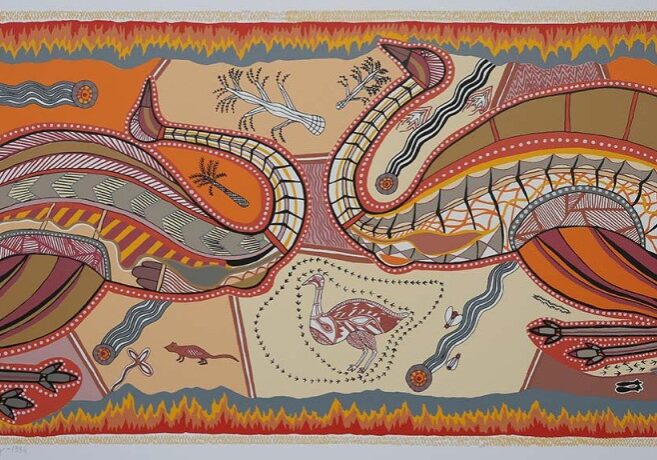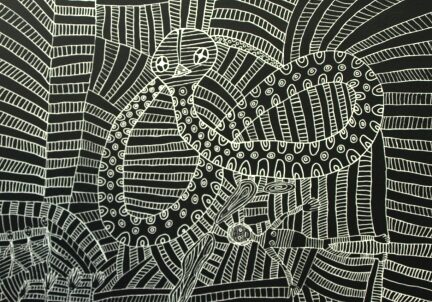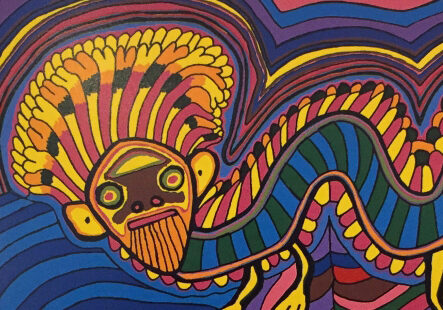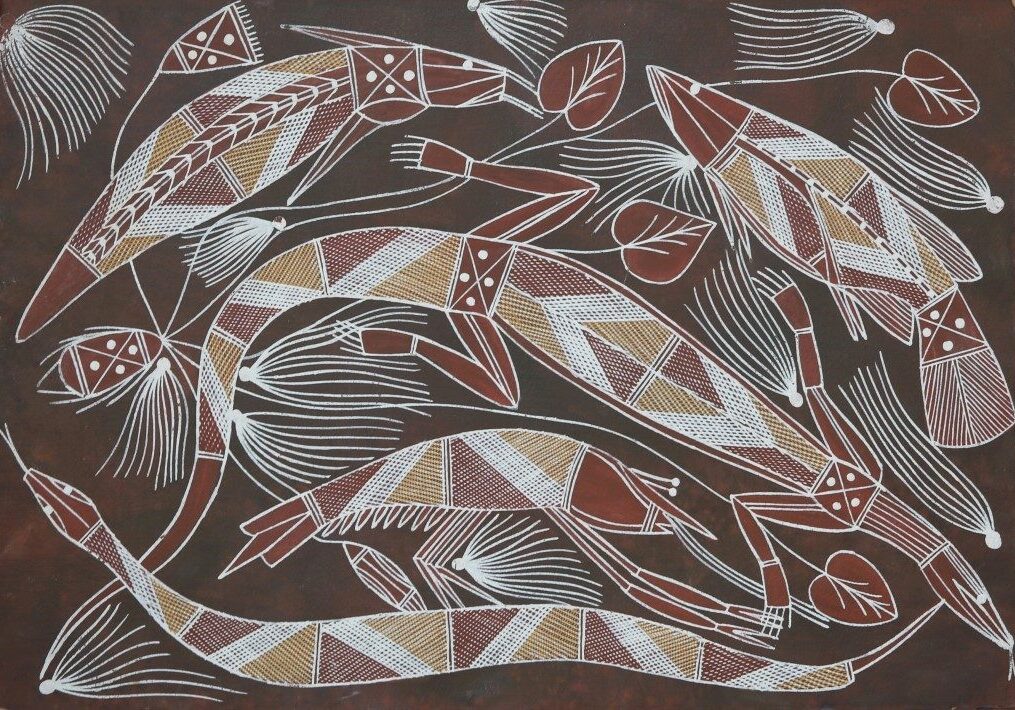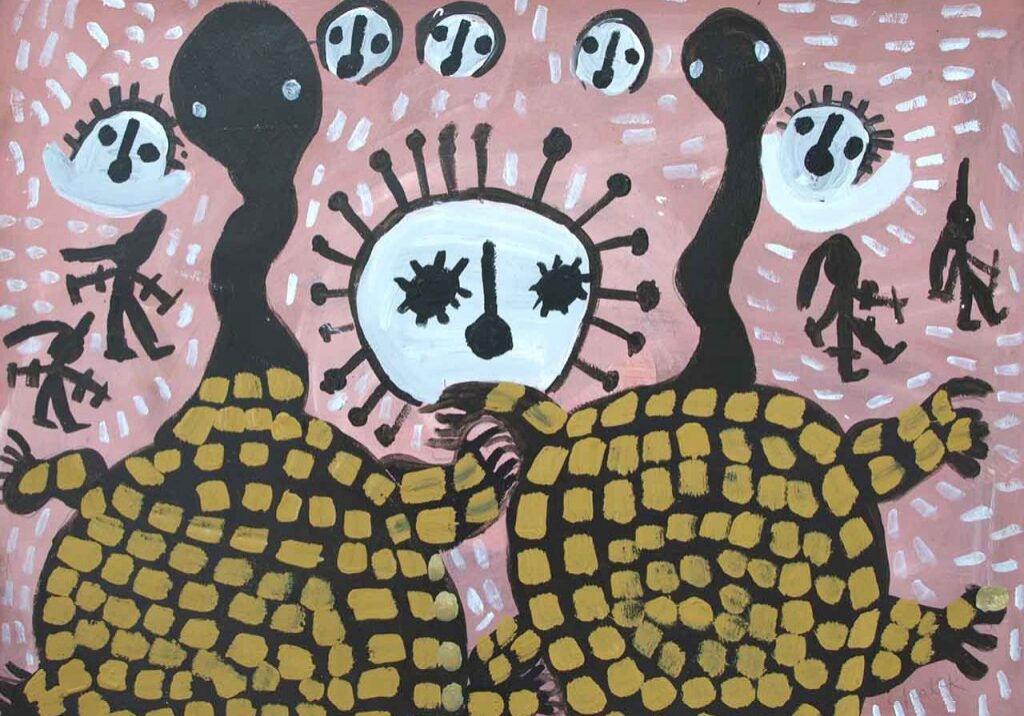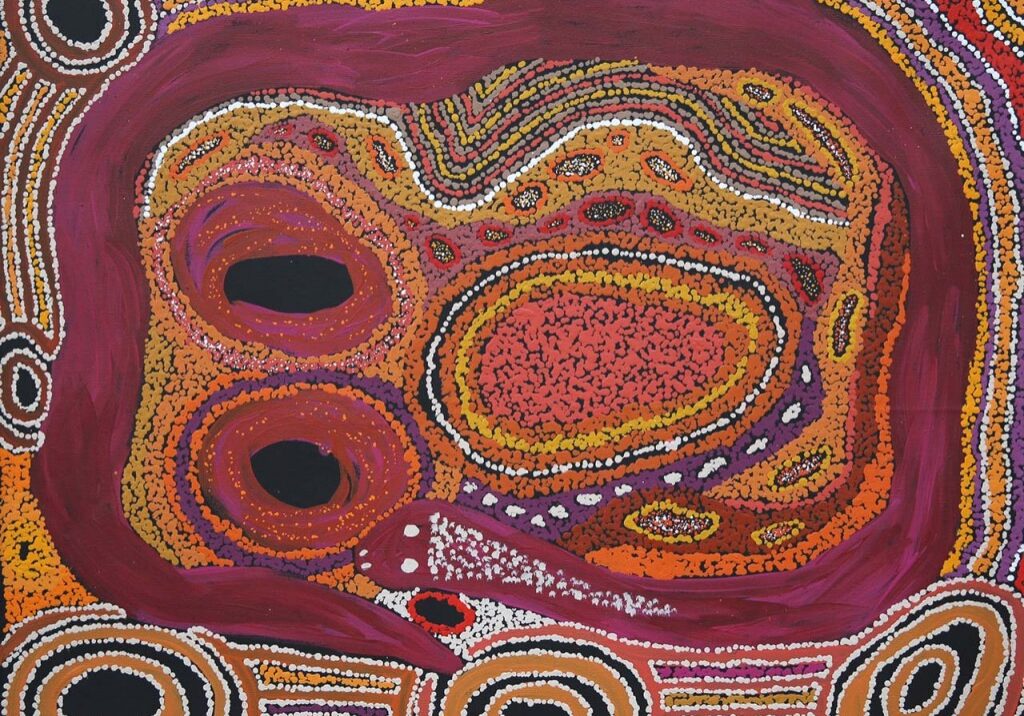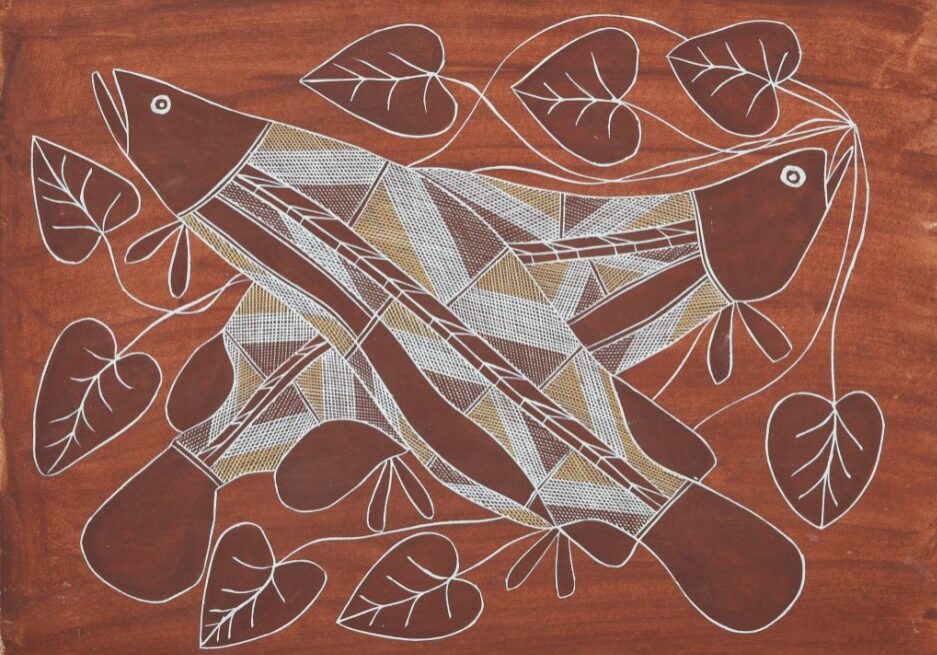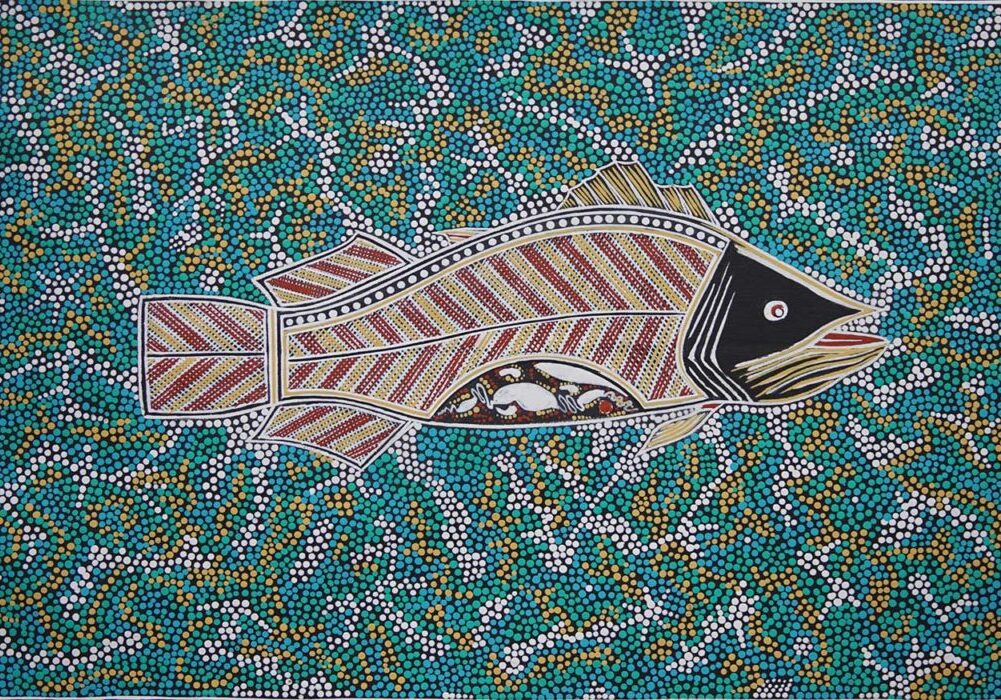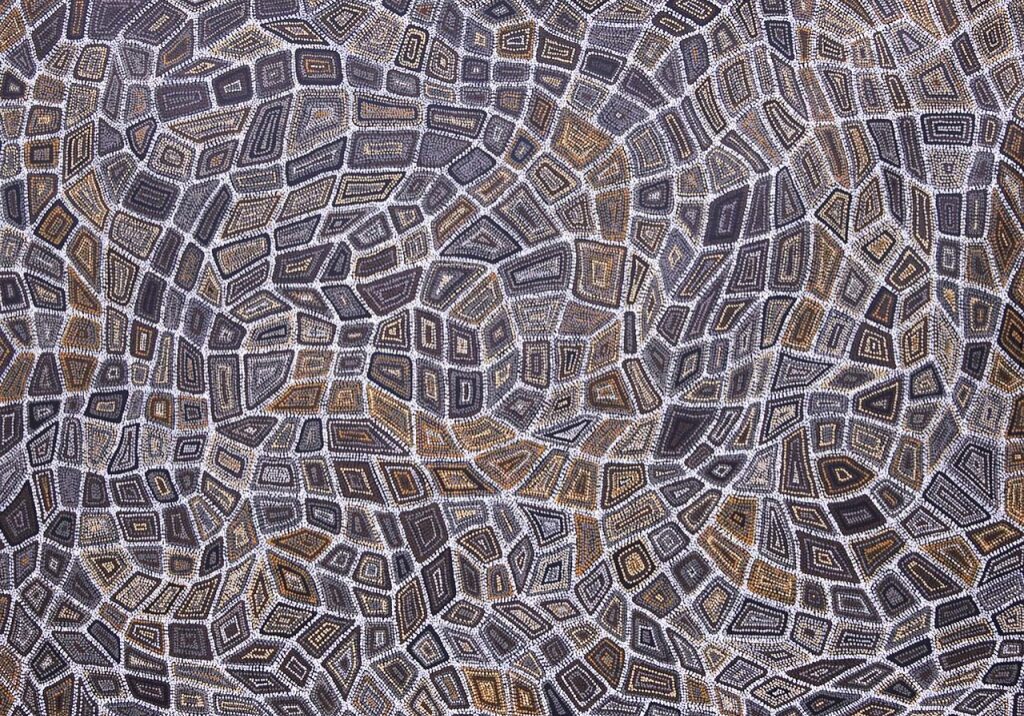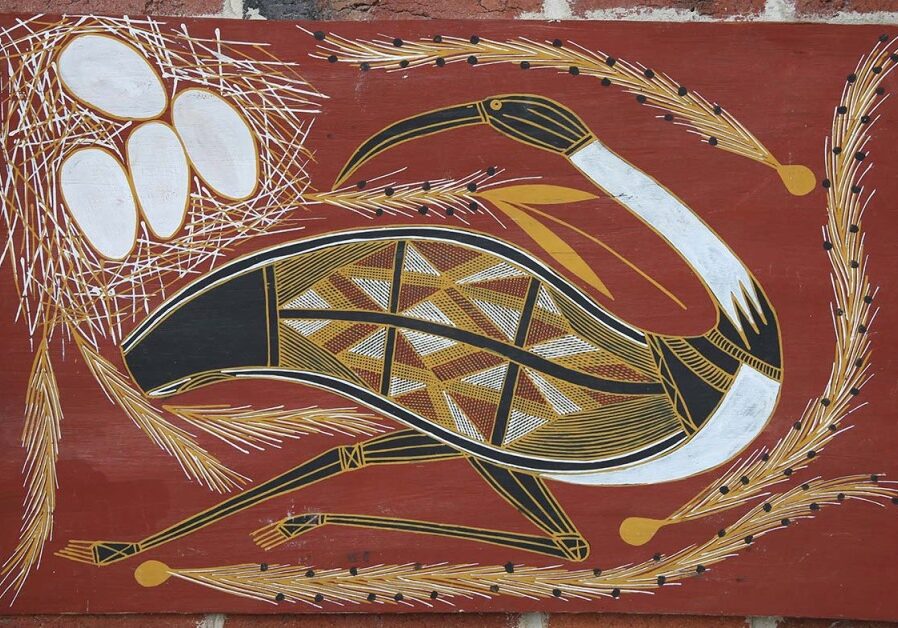Aboriginal Animal Art
Japingka Aboriginal Art Gallery presents a range of Aboriginal art featuring animals. The artists employ a range of styles including dot art techniques, however the diversity of styles and imagery reflects the many different approaches by the various Aboriginal cultural groups across the country.
How Animals Are Used in Aboriginal Art
Animals are regularly used as a source for symbols and metaphor in all societies. In Aboriginal Australia where the original inhabitants were principally hunters rather than farmers, they relied on the native animals around them for food. And therefore these animals were the ones they turned to for use as symbols in art and story legend. At the heart of many Dreamtime stories and images in Aboriginal art are the wide range of Australian animals from land and sea.
Aboriginal groups in Australia have always maintained a close relationship with their environment and the animals around them. With 50,000 years of co-existence Aboriginal people have a deep knowledge of the animals and the cycle of life. Animals are central to Aboriginal survival as a food source. They are also absorbed into the culture as images of totemic power and into the Dreamtime Creation stories that link the people, land and animals.
Aboriginal rock art is some of the oldest existing on earth and these paintings show the presence of animals that have since become extinct in that part of the country. One famous example of this is the Thylacine or Tasmanian tiger, which appears in rock art of northern Australia, where it has long been extinct. The rock art sites show the history of the environment and the changes that have taken place over millenia, as recorded by Aboriginal artists.
Aboriginal paintings from the northern areas of Australia tend to be more figurative, showing a realistic image of the animals. Sometimes they also show the animal from the inside, using the x-ray style. This is relevant to hunters who relate to the animals in terms of being a food source.
Aboriginal creation stories are embedded in Dreamtime law and this often links animals to the creation sites on Country and to the people who are custodians of these sites. The Ancestors who created the landscape are seen as the direct link to modern day people and animals.
Animals are represented in the songlines or Creation journeys of the Ancestors. These tracks cross over all areas of Australia. Major songlines are linked to Goanna, Budgerigar, Dingo, Possum, Emu and many other significant animal species. Artwork from Central Australia tends to reflect the hunter and tracker view of the world. Animals are often shown by the tracks they leave in the sand. These tracks can reflect both the Ancestor and the present day animals.
This section on Aboriginal animal art aims to bring many different images by Indigenous artists to provide an overview of the place of naimals in Aboriginal culture.
All the artworks from these pages are available for sale by enquiry. We hope you find this survey of art a useful way to view the collection.

